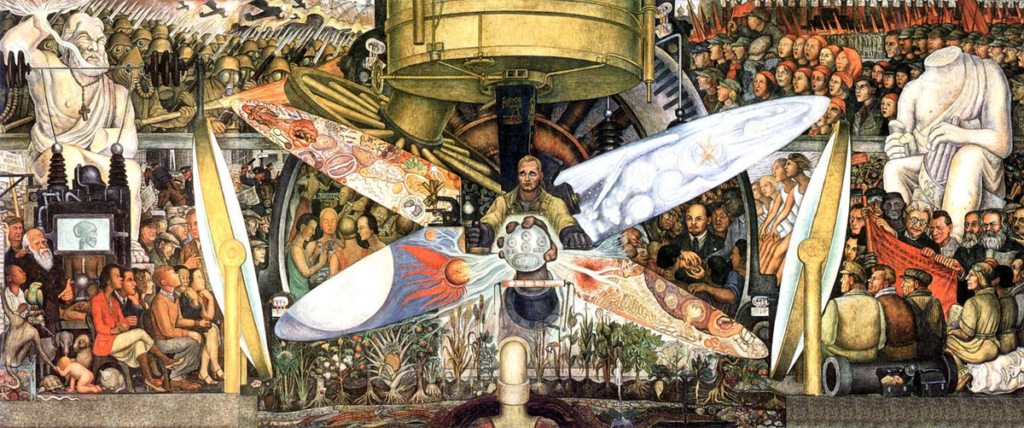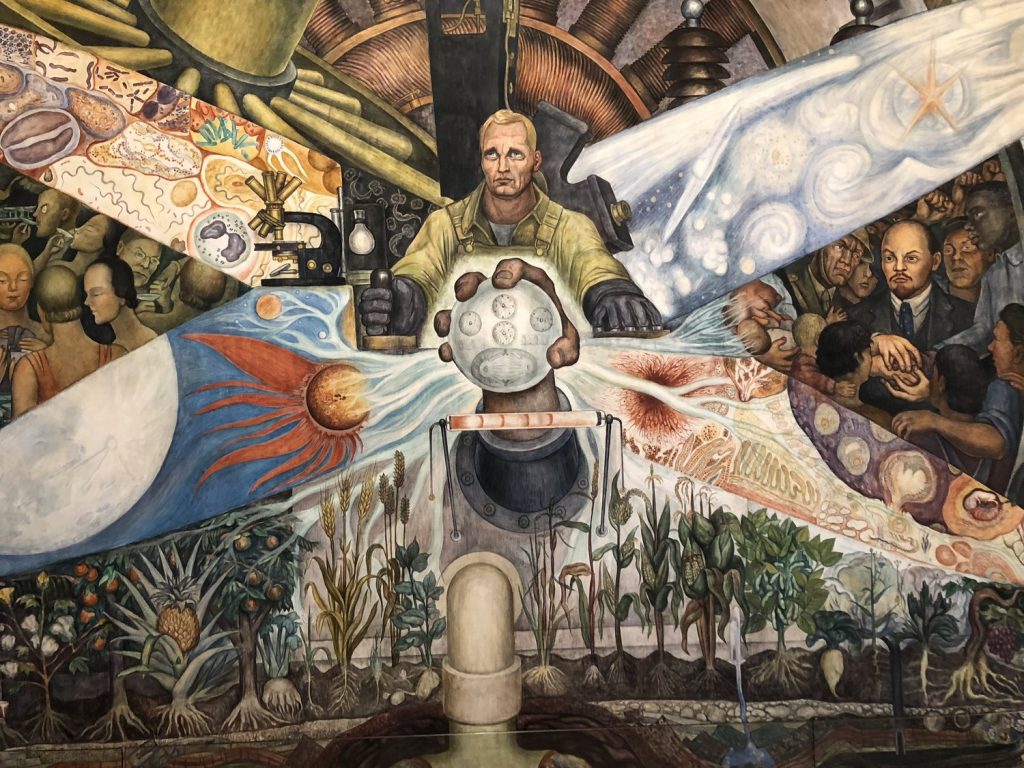Diego Rivera, the remarkable Mexican artist, left an indelible mark on the canvas of art with his mesmerizing murals that vividly portray tales of society, culture, and history. Among his most intriguing creations stands “Man at the Crossroads,” a mural that not only captivated audiences but also sparked controversy. Let’s embark on a leisurely journey through Rivera’s life, his artistic expedition, and the captivating narrative behind “Man at the Crossroads,” peppered with fascinating insights about this iconic artwork.
Getting Acquainted with Diego Rivera

Diego Rivera, born in 1886 in Guanajuato, Mexico, wasn’t just an ordinary artist—he was a true master of murals. His artistic journey commenced with a simple knack for art that blossomed over time through exploration and learning. Rivera’s art wasn’t merely about pretty pictures; it was a reflection of his deep-seated beliefs and his unwavering commitment to fostering positive change in the world.
FUN FACT: Diego Rivera, known for his monumental murals depicting Mexican culture and history, had a unique fascination with frogs! He often included them in his artwork as symbols of fertility and regeneration. In fact, he even kept frogs as pets, finding inspiration in their vibrant colors and lively movements.
Rivera’s Artistic Odyssey
Rivera’s artistic voyage took him far and wide, from the bustling streets of Europe to the heart of Mexico’s cultural landscape. He soaked in the revolutionary spirit of avant-garde movements during his time in Europe before returning home to become a leading figure in the Mexican muralism movement. His murals adorned public spaces, telling tales of Mexican history, culture, and the struggles of its people for all to see and contemplate.
Unraveling the Tale of Man at the Crossroads

| Artist | Diego Rivera |
| Date Created | 1932 |
| Medium | Fresco |
| Genre | Muralism |
| Period | 20th Century |
| Dimensions | 22 ft × 6 ft |
| Series/Versions | N/A |
| Where Housed | Destroyed |
Man at the Crossroads emerged from a commission for the Rockefeller Center in New York City in 1932. This monumental mural wasn’t just a mere painting; it was a narrative woven with threads of humanity’s journey through the ebb and flow of time. At its core stood a towering figure symbolizing humanity, surrounded by scenes depicting technological marvels, social upheavals, and the relentless pursuit of progress.
But what truly ignited a storm of controversy—and grabbed everyone’s attention—was the inclusion of a figure representing Vladimir Lenin, the revolutionary leader. This bold move didn’t sit well with the Rockefeller family, who deemed it too politically charged for their liking. When Rivera staunchly refused to erase Lenin from his masterpiece, he was promptly shown the door, and the mural was doomed to destruction.
Interesting facts about Man at the Crossroads
Controversial Commission: The commission for “Man at the Crossroads” caused quite a stir due to Rivera’s political stance and the mural’s provocative content. It was commissioned by Nelson Rockefeller but later destroyed due to artistic differences.
Tragic Fate: Despite its grandeur, the mural met a tragic end when Rivera was fired, and the artwork was destroyed. However, Rivera later recreated a modified version titled “Man, Controller of the Universe” in Mexico City.
Inspiration from Michelangelo: Rivera drew inspiration from the works of Renaissance master Michelangelo, particularly his frescoes in the Sistine Chapel, infusing his own masterpiece with a timeless quality.
Enduring Legacy:Though physically lost, “Man at the Crossroads” continues to leave an indelible mark on art history, serving as a poignant reminder of Rivera’s unwavering dedication to social justice and artistic integrity. Rivera’s legacy lives on through his other works and his influence on subsequent generations of artists.
Artwork Spotlight: Detroit Industry Murals

The “Detroit Industry Murals” by Diego Rivera are an eye-opening demonstration of art’s ability to bottle the ethos of an era, portraying the industrial expertise of Detroit juxtaposed against the plight of its working class.
Frequently Asked Questions
What is the meaning of Man at the Crossroads?
The primary focus of the composition aimed to juxtapose Capitalism and Socialism. This fundamental concept received approval from Rockefeller. Rivera’s arrangement portrayed various facets of modern social and scientific culture. At its heart, a laborer was depicted overseeing machinery.
Why was Man at the Crossroads removed?
Rivera’s vision for “Man at the Crossroads” featured a depiction of the Russian communist leader Lenin, which irked the capitalist Rockefeller. Rockefeller demanded Rivera to eliminate it, yet Rivera stood firm in his refusal. Eventually, Rockefeller compensated Rivera for the commission but barred the artist from access and ordered the destruction of the artwork.
Conclusion
Diego Rivera’s Man at the Crossroads isn’t just a static mural; it’s a dynamic journey through time and space, inviting us to ponder humanity’s trials and triumphs. Despite its tumultuous journey and eventual demise, its spirit lives on, inspiring generations to dream big, challenge the status quo, and work towards a brighter tomorrow. Rivera’s legacy as a trailblazer in the world of art endures, reminding us of the transformative power of creativity and the enduring relevance of speaking truth to power through artistic expression. As we reflect on Rivera’s life and work, we are reminded that art has the power to provoke, inspire, and change the world.













